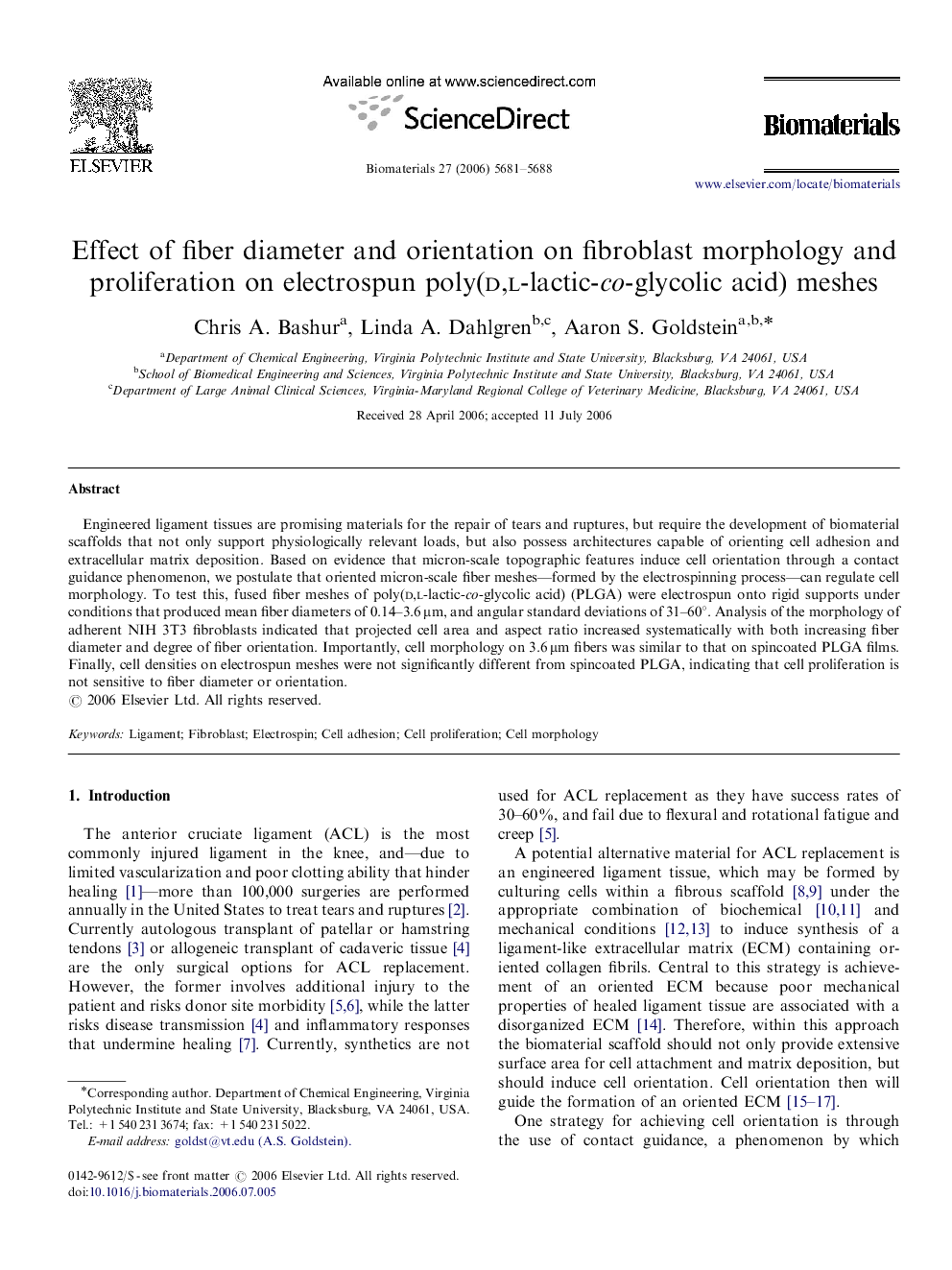| Article ID | Journal | Published Year | Pages | File Type |
|---|---|---|---|---|
| 11217 | Biomaterials | 2006 | 8 Pages |
Engineered ligament tissues are promising materials for the repair of tears and ruptures, but require the development of biomaterial scaffolds that not only support physiologically relevant loads, but also possess architectures capable of orienting cell adhesion and extracellular matrix deposition. Based on evidence that micron-scale topographic features induce cell orientation through a contact guidance phenomenon, we postulate that oriented micron-scale fiber meshes—formed by the electrospinning process—can regulate cell morphology. To test this, fused fiber meshes of poly(d,l-lactic-co-glycolic acid) (PLGA) were electrospun onto rigid supports under conditions that produced mean fiber diameters of 0.14–3.6 μm, and angular standard deviations of 31–60°. Analysis of the morphology of adherent NIH 3T3 fibroblasts indicated that projected cell area and aspect ratio increased systematically with both increasing fiber diameter and degree of fiber orientation. Importantly, cell morphology on 3.6 μm fibers was similar to that on spincoated PLGA films. Finally, cell densities on electrospun meshes were not significantly different from spincoated PLGA, indicating that cell proliferation is not sensitive to fiber diameter or orientation.
